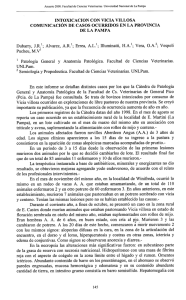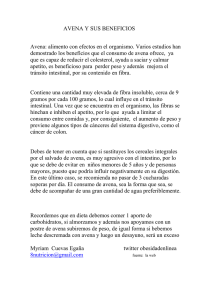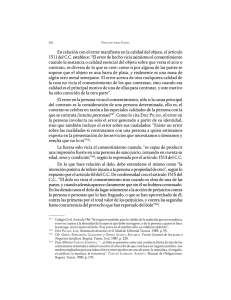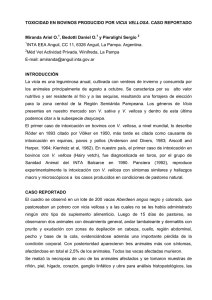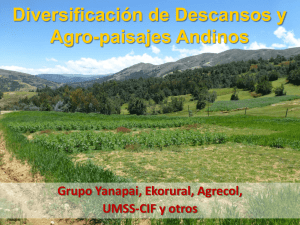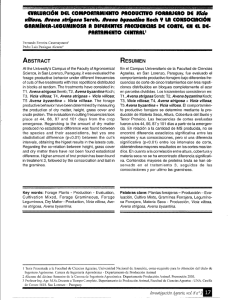XXII Congreso de la ALAM I Congreso de la ASACIM RELACIÓN
Anuncio
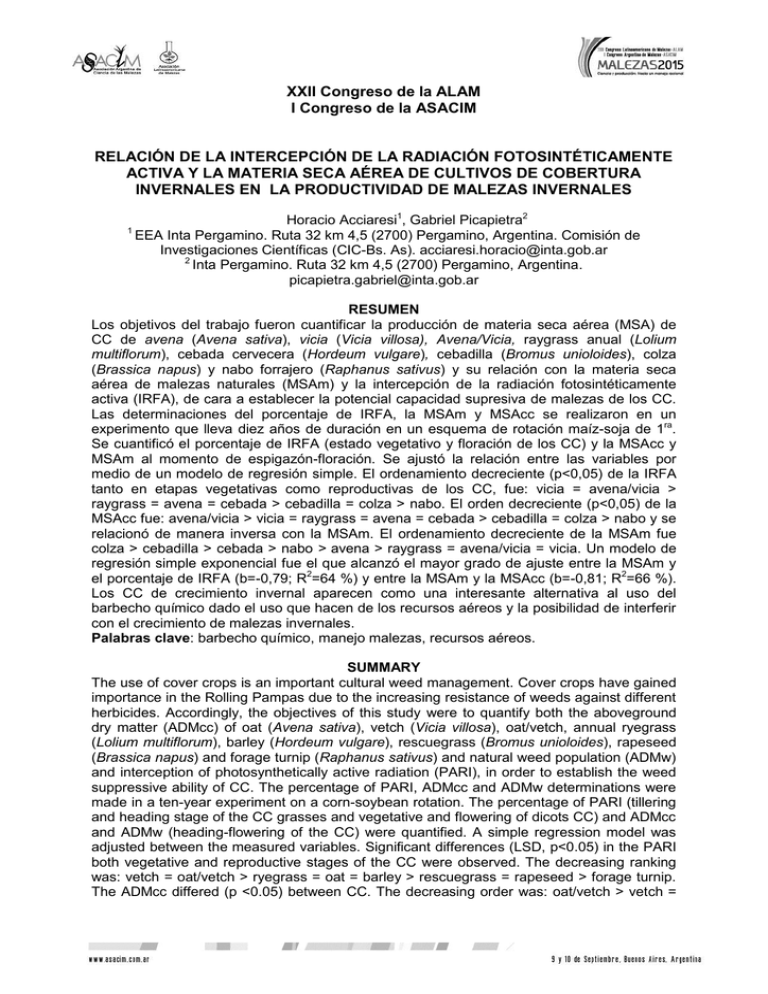
XXII Congreso de la ALAM I Congreso de la ASACIM RELACIÓN DE LA INTERCEPCIÓN DE LA RADIACIÓN FOTOSINTÉTICAMENTE ACTIVA Y LA MATERIA SECA AÉREA DE CULTIVOS DE COBERTURA INVERNALES EN LA PRODUCTIVIDAD DE MALEZAS INVERNALES 1 Horacio Acciaresi1, Gabriel Picapietra2 EEA Inta Pergamino. Ruta 32 km 4,5 (2700) Pergamino, Argentina. Comisión de Investigaciones Científicas (CIC-Bs. As). acciaresi.horacio@inta.gob.ar 2 Inta Pergamino. Ruta 32 km 4,5 (2700) Pergamino, Argentina. picapietra.gabriel@inta.gob.ar RESUMEN Los objetivos del trabajo fueron cuantificar la producción de materia seca aérea (MSA) de CC de avena (Avena sativa), vicia (Vicia villosa), Avena/Vicia, raygrass anual (Lolium multiflorum), cebada cervecera (Hordeum vulgare), cebadilla (Bromus unioloides), colza (Brassica napus) y nabo forrajero (Raphanus sativus) y su relación con la materia seca aérea de malezas naturales (MSAm) y la intercepción de la radiación fotosintéticamente activa (IRFA), de cara a establecer la potencial capacidad supresiva de malezas de los CC. Las determinaciones del porcentaje de IRFA, la MSAm y MSAcc se realizaron en un experimento que lleva diez años de duración en un esquema de rotación maíz-soja de 1ra. Se cuantificó el porcentaje de IRFA (estado vegetativo y floración de los CC) y la MSAcc y MSAm al momento de espigazón-floración. Se ajustó la relación entre las variables por medio de un modelo de regresión simple. El ordenamiento decreciente (p<0,05) de la IRFA tanto en etapas vegetativas como reproductivas de los CC, fue: vicia = avena/vicia > raygrass = avena = cebada > cebadilla = colza > nabo. El orden decreciente (p<0,05) de la MSAcc fue: avena/vicia > vicia = raygrass = avena = cebada > cebadilla = colza > nabo y se relacionó de manera inversa con la MSAm. El ordenamiento decreciente de la MSAm fue colza > cebadilla > cebada > nabo > avena > raygrass = avena/vicia = vicia. Un modelo de regresión simple exponencial fue el que alcanzó el mayor grado de ajuste entre la MSAm y el porcentaje de IRFA (b=-0,79; R2=64 %) y entre la MSAm y la MSAcc (b=-0,81; R2=66 %). Los CC de crecimiento invernal aparecen como una interesante alternativa al uso del barbecho químico dado el uso que hacen de los recursos aéreos y la posibilidad de interferir con el crecimiento de malezas invernales. Palabras clave: barbecho químico, manejo malezas, recursos aéreos. SUMMARY The use of cover crops is an important cultural weed management. Cover crops have gained importance in the Rolling Pampas due to the increasing resistance of weeds against different herbicides. Accordingly, the objectives of this study were to quantify both the aboveground dry matter (ADMcc) of oat (Avena sativa), vetch (Vicia villosa), oat/vetch, annual ryegrass (Lolium multiflorum), barley (Hordeum vulgare), rescuegrass (Bromus unioloides), rapeseed (Brassica napus) and forage turnip (Raphanus sativus) and natural weed population (ADMw) and interception of photosynthetically active radiation (PARI), in order to establish the weed suppressive ability of CC. The percentage of PARI, ADMcc and ADMw determinations were made in a ten-year experiment on a corn-soybean rotation. The percentage of PARI (tillering and heading stage of the CC grasses and vegetative and flowering of dicots CC) and ADMcc and ADMw (heading-flowering of the CC) were quantified. A simple regression model was adjusted between the measured variables. Significant differences (LSD, p<0.05) in the PARI both vegetative and reproductive stages of the CC were observed. The decreasing ranking was: vetch = oat/vetch > ryegrass = oat = barley > rescuegrass = rapeseed > forage turnip. The ADMcc differed (p <0.05) between CC. The decreasing order was: oat/vetch > vetch = ryegrass = oat = barley > rescuegrass = rapeseed > forage turnip and were inversely related to the ADMw. The decreasing order of the ADMw was: rapeseed > rescuegrass > barley > forage turnip > oat > ryegrass = oat/vetch = vetch. The greater degree of fit between the ADMcc and PARI percent (b = -0.79, R2 = 64 %) and between the ADMw and ADMcc (b = 0.81, R2 = 66 %) was obtained with an exponential model regression. The CC of winter growth appear as an interesting alternative to using chemical fallow given their use of air assets and the ability to interfere with the growth of winter weeds. Winter cover crops appear as an interesting alternative to chemical fallow given the high solar radiation use and the interference with winter weeds. Keywords: Aboveground dry matter, chemical fallow, weed management.
